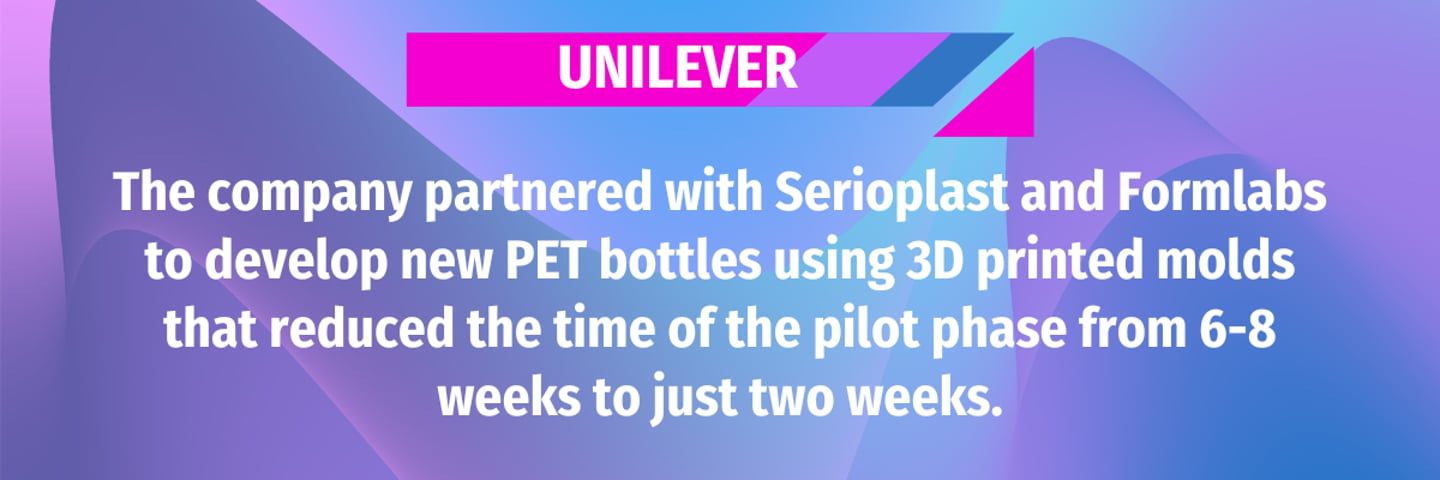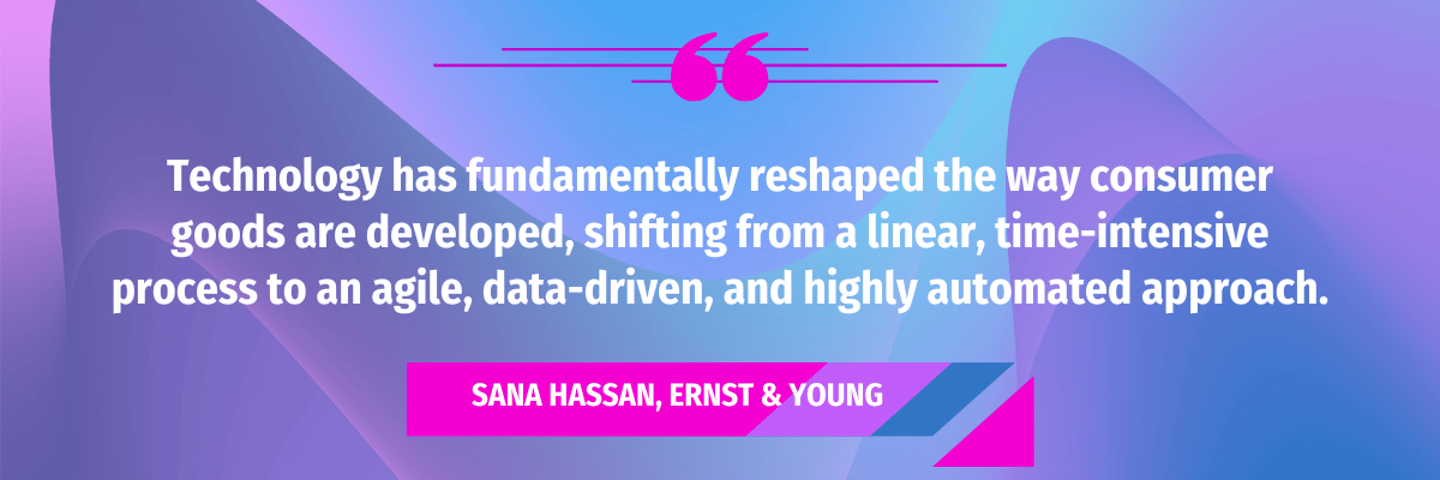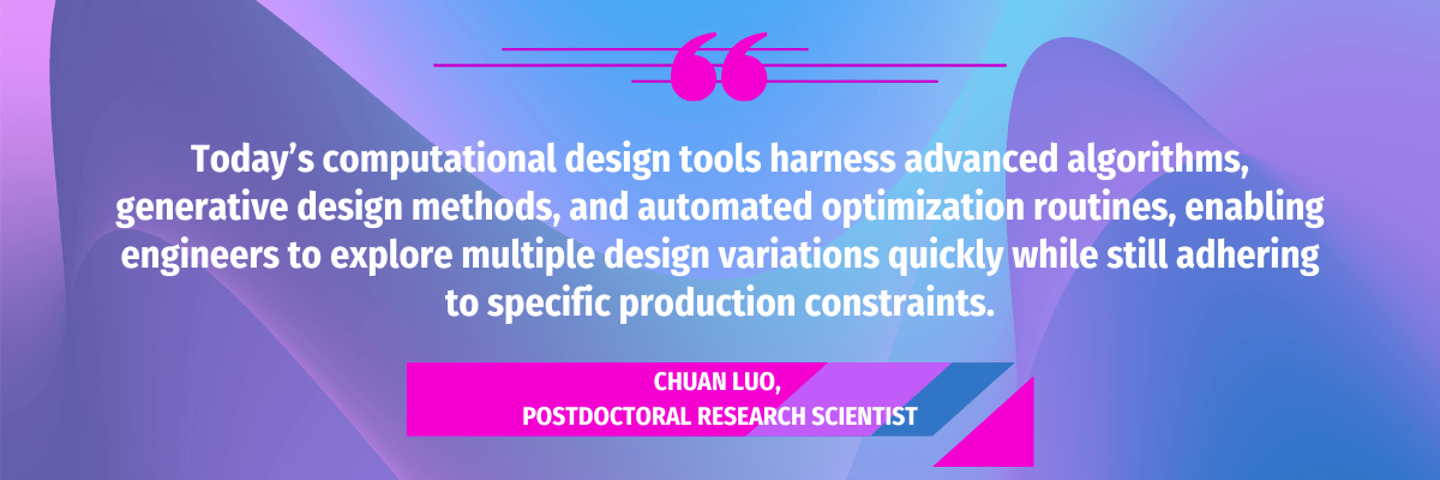How Embedding AI Is Accelerating Product Development Launch Cycles
Keep up or get left behind.
This seems to be the mantra that consumer goods companies must abide by as they face fierce competition to not only meet constantly evolving consumer demands but also face off with the constant churn of innovation from fellow brands.
“Technology has fundamentally reshaped the way consumer goods are developed, shifting from a linear, time-intensive process to an agile, data-driven, and highly automated approach,” Sana Hassan, a senior manager at Ernst & Young, tells CGT. “While consumer goods companies have been embedding data-driven decision-making at every step, from product innovation and R&D to shelf allocation based on consumer behavior, today’s scale of technology has elevated this transformation to unprecedented levels.”
Artificial intelligence has been embedded at nearly every step of product development, from product blueprint to computational design to 3D prototyping. Companies such as PepsiCo, Bic, L’Oreal, Newell, and Adidas have modernized their operations by harnessing these technologies. For many of these companies, the timeline from ideation to ready-to-market or pilot periods has shortened as a result.
Shaping the Product
Even before a product idea emerges, consumer goods companies are using artificial intelligence to scan shopper behavior and internal data to identify potential concepts and formulations.
L’Oreal, for example, is using generative AI to discover new ideas from its trove of chemistry formulas as well as optimize production scale-up. Bic is also using similar technology to quickly analyze consumer studies and market data to identify areas of opportunity and generate product and design ideas.
“AI-led consumer insights leverage real-time data from social media, e-commerce trends, and behavioral analytics to proactively identify market opportunities, replacing traditional, time-consuming surveys and focus groups,” says Hassan.
The data is then used to develop new formulations, designs, and packaging, allowing companies to create highly personalized products with minimal manual intervention, she adds. “In sectors like beauty, food, and fashion, AI can generate ingredient combinations, simulate product performance, and suggest design modifications that align with consumer preferences and sustainability goals.”
Getting Into Design
Companies didn’t yet see measurable value in deploying AI at scale within the product design process in 2023, per a Bain Consumer Products Tech Leadership Survey; however, 80% of respondents at least had it on their three-year roadmap to explore. Since then, several consumer goods companies have been using AI to aid in design creation for new products — at least in exploratory ways.
Adidas, for example, trained a stable diffusion algorithm using Amazon technology on 150,000 shoe images at different angles to be able to mash up designs or create new ones based on certain criteria as inspiration. Additionally, in China, the company used Amazon EC2 and Amazon SageMaker to create photorealistic models, slashing time to market and costs by eliminating the need for photoshoots and graphic design.
Newell Brands also recently expedited speed to market in the ideation stage by using AI to generate text-to-images in seconds — a process that previously took the company weeks to complete. These types of automations, Melanie Huet, president of brand management and innovation at Newell, previously told CGT, have reduced the complexity of operations, removing entire days from workflow cycles to free up time for more value-added tasks.
“With AI-first product development, companies move beyond just responding to trends; they
anticipate and create them,” says Hassan. She says the shift enables faster innovation and deeper personalization that bridges the gap between insight generation and execution, making real-time, intelligent decisions that drive business growth.
Prototyping and Manufacturing
AI also has a hand in the transition phase between design and manufacturing. McKinsey & Company reported a variety of use cases. While still early, they say these AI-driven capabilities will “drastically improve and accelerate design-to-engineering handovers.”
- GenAI software that allows industrial designers and engineers to rapidly turn product concepts into CAD models.
- GenAI that can perform finite element analysis and topological optimization to better understand how a part performs under various conditions and how to produce lightweight but strong parts. This technology can generate hundreds of design options for parts based on criteria such as forces, pressures, and environmental conditions.
- GenAI that turns rough sketches into detailed engineering part models, facilitates material selection and optimization, and identifies how to improve manufacturability, optimize assembly, and lower costs.
Computation design processes are particularly popular in the footwear manufacturing space with brands such as New Balance, HP, Carbon, and Adidas, according to the Association for Manufacturing Technology. Through this, these companies have overcome hurdles related to scaling product customization by using 3D scanning and lattice designs to create intricate patterns.
Engineering constraints such as weight limits, stress tolerances, or manufacturability rules can be embedded into parametric computation design models, automatically filtering out designs that simply won’t work, according to Chuan Luo, a postdoctoral research scientist who co-advises within the department of mechanical engineering at Columbia University.
“Today’s computational design tools harness advanced algorithms, generative design methods, and automated optimization routines, enabling engineers to explore multiple design variations quickly while still adhering to specific production constraints,” he tells CGT. “This capability streamlines both the design and fabrication phases, reducing overall development costs and accelerating time to market.”
Machine learning and digital twin technology can perform similar tasks, allowing companies to refine their products in simulated environments before physical production begins, says Hassan. This allows companies to better predict failure points and optimize designs without having to go through multiple iterations of costly physical prototyping.
Once companies move to that physical step, AI and 3D printing leverage advanced algorithms, real-time monitoring, and data-driven feedback loops to produce higher-quality prototypes with reduced lead times, says Luo.
Bic is one such company using this technique, tapping machine learning and 3D printing in the new product manufacturing phase to refine processes and expedite time-to-market. Also, Unilever partnered with Serioplast and Formlabs to develop new PET bottles using 3D-printed molds that reduced the time of the pilot phase from six to eight weeks to two weeks.
“Ultimately, these advanced digital tools are reshaping the entire product development lifecycle,” says Hassan. “AI-driven consumer insights, generative design models, virtual prototyping … by integrating these tools, companies are moving from slow, intuition-driven processes to fast, intelligent, and highly data-driven product innovation.”









